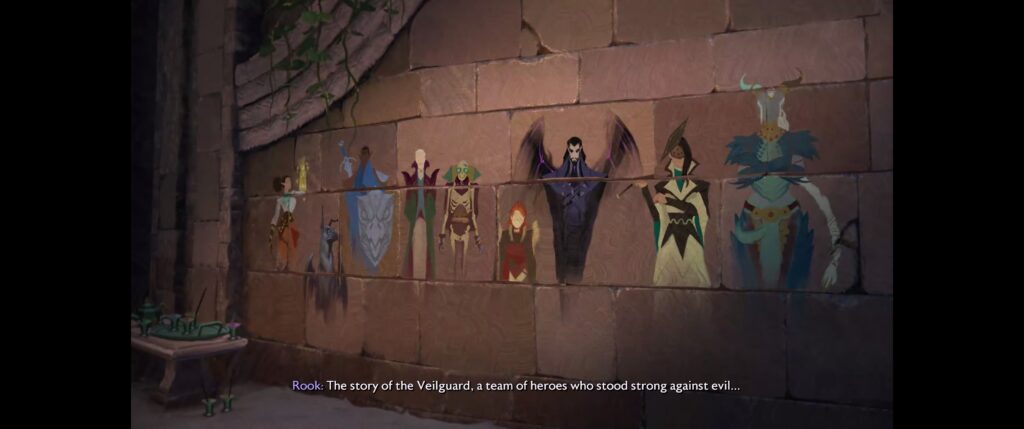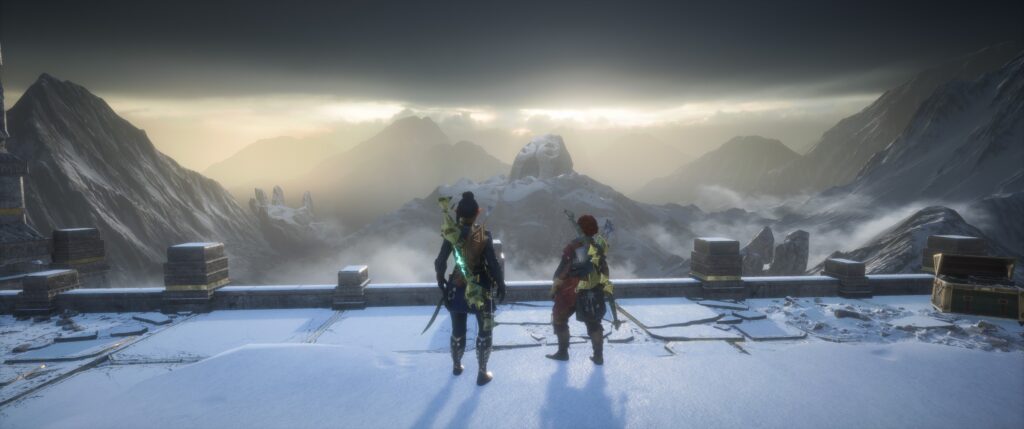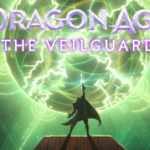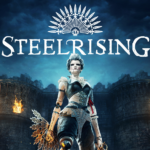While Dragon Age: Origins is one of my favorite games of all time, Dragon Age II seemed like a big step back in world building and companion customization. Dragon Age: Inquisition caught the Far Cry disease and became an open world RPG with a bunch of quests that did little to advance the story but were necessary to grind experience.
Dragon Age 4 has thrown most of that away. The world is BIG, and once the game opens up, you have a good amount of freedom over where you go and who you go with. The tactical strategy aspect of the first two games is long gone, replaced with an action combat system that has some strategic elements.
I’ve already written a bit about the game, so I’m not going to go over a lot of the details. I want to talk about how I feel about it as a game, now that I have completed the first playthrough.
Companions:
- Harding — dwarf representative of the Inquisition from DA3. Her story brings us back to the Deep Roads that we explored in the first game. We don’t get to visit Ozrammar or the new dwarf city mentioned in this game, and of all the stories, I feel hers is the least important to the plot. Her companion power is shifting stone barriers.
- Davrin — elf Gray Warden and companion to one of the last griffons in the world. I found him to be a not great tank. I liked his story, and we visited a lot of important Gray Warden locations. I used him for anything dealing with the Gray Wardens who have a lot of very important set pieces in the story. When I needed a tank, I went with Taash. His companion power is summoning his griffon to attack key points.
- Taash — Qunari Dragon Hunter. Taash lives with their mom and is struggling with their gender and cultural identities, which is what is causing such a pushback from the Nazi crowd. I was curious about what romance with them would be like, so I chose them and it was like dating a teenager. Wouldn’t recommend. Their story, though, dives deeply into the Qunari culture that previously formed the center of the conflict in DA2. There are a lot of dragons in DA4, and Taash is who you bring when you have dragon problems. They are a great all-around tank as well. Their companion power is burning things.
- Neve — human mage and detective. I love Neve. She’s the best. Always poised, always well dressed, just always perfect, and not in an aggravating way. She’s missing a foot and wears a golden metal replacement instead but it’s never mentioned what happened. Neve works in and around the powers and people of the Dock Town neighborhood of Minrathous, which is all we see of the Tevinter capital until the endgame. Her story directly impacts a lot of the plot in the game. Her companion power is disenchanting.
- Lucanis — human assassin, partially demon-possessed. Lucanis is in line to become the First Talon of the Crows, an assassin guild in the Venetian-inspired city of Treviso. He is bonded against his will to a spite demon that is constantly warring with Lucanis for control of his body. In order to stay awake as much as possible, Lucanis drinks coffee all the time and has become a coffee snob. He’s funny at times, deadly serious at times, though his characterization (and that of all the Crows, really) skirts with self-parody at time. Those accents. His personal story is key to the plot. I usually paired him with Neve, and they eventually started seeing each other outside of missions. His companion power is creating constructs from light.
- Emmrich — Nevarran Necromancer. Here, Bioware is trying to make necromancers seem friendly and cool with Emmrich being a cross between Vincent Price and your favorite uncle. His stalwart companion is his skeletal servant Manfred, whom he raised from a wisp. Unusual for one who lives in a Necropolis and loves undead, spirits, and some demons, he is terrified of dying, but nonetheless offers his aid in your quest and is the best mage on the team. He and Taash were my “go to” team on missions, unless one of the other companions was on their personal quest. His companion power is commanding spirits.
- Bellara — Dalish elf historian and tinkerer. She hides deep griefs and sorrows with a cheerful personality and a single-minded devotion to her work. Being a historian allows her to talk about the elven history that forms the backbone of the plot; her personal story is key, and in my playthrough, ended up being one of the most important characters. I usually paired her with Davrin. Her companion power is fixing ancient elven devices.
You can use companion powers, once unlocked, even if the companion is not on your current team; in that case, you can channel their gift through the lyrium dagger you carry. The companion powers are largely for puzzle solving.
Puzzles
This game loves its puzzles, but they are rarely obvious. If you see a treasure chest but can’t get to it, it may be because it’s locked behind a puzzle, or it may just be an area that hasn’t opened up yet. Or it may require the powers of companions you have not yet recruited.
One way or the other, you’ll find yourself climbing, jumping and exploring in order to find your way to that sweet, sweet treasure. Every little bit helps. Finding copies of gear you already have automatically upgrades that gear. Every collectible increases the enchantments available once you get to that point. Every valuable can be strategically sold to shore up support with factions that may not have yet warmed to your obvious charms. You’d like to be making stories; instead, you’re making maps.
I kid. I enjoyed the puzzles, and discovering the solutions was usually pretty fun. After awhile, you can vibe with the puzzle designer and know what you’re looking for.
Combat
I mentioned in an earlier build that I was working on a one hit/one kill bow-centered build. I did bring that to the end game, and my skill increases kept good pace with the raising danger from the mobs. Even in the final fights, I was able to one shot most trash mobs. Along the way, I discovered a lot of other interesting build possibilities. The builds work best when you decide upon a key element — in my build, a bow that shot just one arrow in return for insane damage — and then choose the best equipment to support that. In my build, that was arrow regeneration, weak point damage, necrotic weapon splash damage and critical hits. I found an amulet that would always guarantee max arrows, but remove weak point damage from ranged attacks. There’s always trade-offs. It’s a fascinating system.
You’re able to slot four abilities from those unlocked in your skill tree, along with a special ultimate move. Abilities typically do direct damage to enemies, but the best abilities are either primers — abilities that apply a condition to enemies, or detonators — abilities that remove conditions from enemies and make them explode. Weaving damaging attacks with the abilities of you and your companions is key to taking down bosses or large crowds of trash mobs. Naturally, you can tune your build to using abilities or ultimates more often. With my preferred team of Taash and Emmrich, I could apply Weakened and Sundered, and Taash could pull in surrounding mobs and detonate them. Emmrich could also apply Weakened, but most often I left him supporting the necrotic damage from my weapons as well as healing me. When all my abilities were on cooldown, he would step in.
Time stops when you’re in the abilities overlay. You have all the time you need to pick out the most devastating combos. I destroyed the final boss this way. They would jump away from my arrows, but they’d always walk into those abilities.
System Requirements and Gameplay
I have an older video card and was running the game off a normal hard drive; the game struggled for me until I stepped the graphics down a notch. The game looked just as good to me. The lighting wasn’t quite as good, but it was worth it to have smooth graphics.
At the beginning of the very last mission objective, the game crashed to desktop. It would not get past this point. Uninstalling the game and reinstalling it on my (smaller) drive did the trick and I was able to finish the game.
I started with keyboard and mouse but switched to a PS4 controller not far into the game. I find the constant movement and targeting easier with the controller.
The game has a difficulty slider, but you can tune your difficulty in many ways. Those with trouble hearing can get increased visual cues as to what’s going on. Those with sight issues can get aural cues. Those with dexterity issues can choose between several levels of aim assist.
The Bioware team has gone out of their way to make the game as inclusive as possible to those with issues gaming, and inclusive in other ways. The character creator lets you create an astounding variety of characters, including transgender characters. Early in the game, you can choose to add a transgender identity to your backstory, which is then, from what I’ve been told, mentioned a few times in the story. This is independent from the character creator. There are a couple of transgender NPCs in the game, although they don’t play a major role, and your companion Taash eventually chooses to refer to themselves as non-binary, rejecting both the male and female roles in their society. They just want to punch things.
Taash’s coming to terms with their gender identity is a big part of their story. It felt genuine to me, and they could change their mind one way or the other in the future. They just didn’t want to be trapped into someone else’s expectations of who they should be.
Conclusions
I ended the game sorry to see it go. I am disappointed their won’t be a DLC, as a post-credit scene implied a new danger on the horizon. But it could be ten years before we see a Dragon Age 5 that would take up that thread, and that would be a little aggravating.
I want more Dragon Age. I’ll probably have to content myself with replaying one of the earlier ones.








